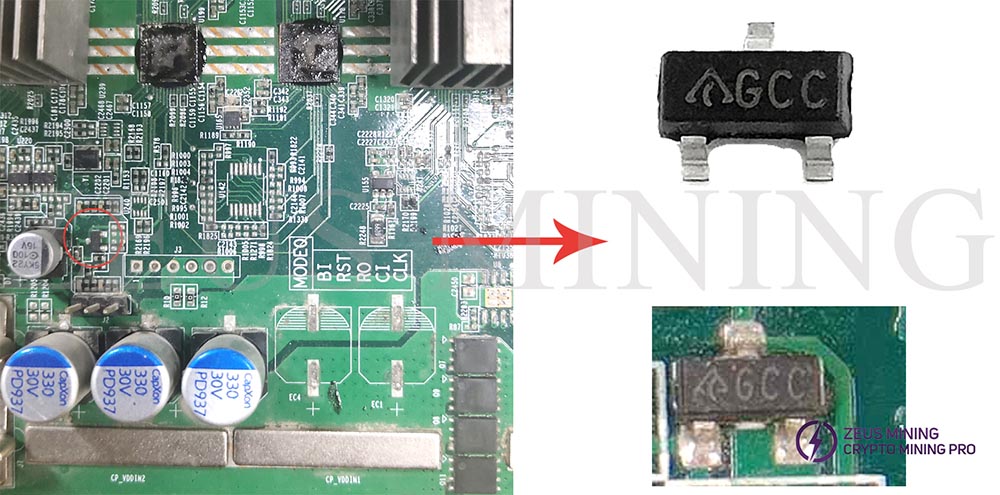ASIC Miner ICERIVER KAS KS0 Profitability In the realm of cryptocurrency mining, the Iceriver KAS KS0 miner has garnered widespread attention. Tailored specifically for the Kaspa network's KHeavyHash algorithm, it boasts high hashing power and low power consumption, making it an ideal choice for many miners. In this article, we will comprehensively assess IceRiver KS0 profitability while considering the Kaspa market conditions and the attributes of KS0 miner. Kaspa Market Dynamics Kaspa is a vibrant cryptocurrency network aimed at delivering high performance and scalability for everyday transactions. At the time of writing this article, the Kaspa coin trades at approximately $0.04959. But it's essential to note that cryptocurrency markets are highly susceptible to price volatility. Hence, investors must remain vigilant about market dynamics. Additionally, the Kaspa network's mining difficulty and reward mechanisms play a role in mining returns. Attributes of the IceRiver KS...
Easily damaged parts of Antminer S17 hash board introduction
After counting, I found more than ten different chips on the S17 hash board, which roughly include ASIC chips, temperature sensor chips, MOS chips, voltage regulator chips, converter chips, etc. So, where exactly are they on the hash board? Let's find out together!
Easily damaged parts of Antminer S17 hash board introduction:
BM1397AD ASIC chip
The Antminer S17 hash board has 48 built-in BM1397AD ASIC chips, which are located under the heat sink and fixed with thermal adhesive, mainly used for the calculation of the hash rate of the miner.
CT1F
SN74LVC1T45DBVR CT1F is a 6-pin dual-power bus transceiver chip IC using SOT23-6 packaging technology; the operating temperature is between -40℃~+80℃, and the working voltage is between 1.65V~5.5V.
AP431SAN1TR-G1 GCC:
The AP431SAN1TR-G1 is a 3-terminal adjustable shunt regulator. Available in SOT23 package technology, with its sharp turn-on characteristics, the AP431SAN1TR has a low minimum cathode current for regulation, and a typical value of 50µA, making the device ideal for very low power applications.
U165: T451
The S17 hash board has 4 built-in T451 temperature sensor chips located around the hash board. The chips use WSON-8 packaging technology to sense the temperature of the hash board when it is running. If the temperature sensor chip is damaged, it will cause abnormal temperature readings. Likewise, if the temperature sensor chip temperature is too low, the hash board will not start, or if the temperature is too high, the miner will stop running.
Q8: P34M4SS
The MOS DMP34M4SPS-13 is an enhancement mode MOS 30V 21A P-channel designed to minimize RDS(ON) and maintain excellent switching performance; the chip has high conversion efficiency and is mainly suitable for power management and load switching.
U7: MPSK301517DR377900
The MPSK391517DR chip is a 3A, 25V, 1.1MHz boost converter chip. Packaged in a tiny 4mm*4mm 16-pin QFN package technology, it regulates the output voltage to 25V with up to 95% efficiency and operates over a temperature range of –40°C to +85°C.
U252: SXE1923
The SXE1923 voltage monitoring chip is mainly used to monitor the real-time voltage of the hash board voltage domain. This component is on the back of the boost circuit. When damaged, the front booster chip will not be able to receive the returned data and stop working, causing the hash board to fail to start. In addition, the hash board is susceptible to electromagnetic interference from adjacent hash boards, which affects the 25Mhz clock signal, resulting in unstable operation, inaccurate temperature monitoring, repeated startup, and other failures.
U3: dsPIC33EP16
dsPIC33EP16 GS202 is a hash board 16-bit microcontroller chip in the SOIC-28 package specification, which is used to store Hashboard's configuration data (ie, PIC file). After the chip is damaged, the hash board does not work, and the voltage and resistance of the whole board are normal, but it cannot start normally.
U6: ATH81402DMCN
The AT24C002D provides 2,048-bit serial electrically erasable and programmable read-only memory (EEPROM) in an 8-pin TSSOP package. The operating voltage is between 1.7V and 3.6V.
U170: MP2019JC859121MPSK25
MP2019JC859121MPSK25 is the product number of the MP2019 series of linear regulators; it comes in the SOP8 package and is suitable for hash board maintenance. It has a voltage input range of 3V to 40V and a current rating of 300mA.
U228: CADMLF
CADMIZ is a hash board voltage domain control chip whose operating input voltage range between 1.7V to 5.5V; using UDFN 1×1mm packaging technology, it supports low input and output voltage requirements, robustly designed and reliable high applications.
U156: SQ7JL SGM2036-ADJ
The SGM2036-ADJ is a 300mA, low power, low dropout, RF linear regulator in an OT-23-5 package with an input voltage between 1.6V and 5.5V; there are functions such as short-circuit automatic discharge and high output voltage progress, which can prolong the life of the battery.













Comments
Post a Comment
Tell us your opinion